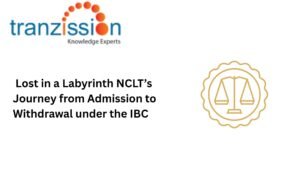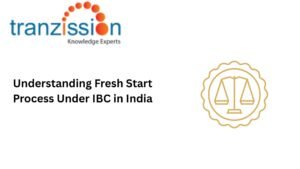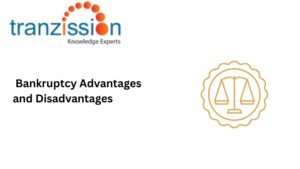
Regulatory bodies under IBC
Table of Contents
Regulatory bodies under IBC, are crucial as they play a vital role in ensuring the smooth and efficient functioning of the insolvency resolution process. They protect the interests of all stakeholders involved and uphold the integrity of the insolvency system in India by regulating key participants within the IBC framework.
Understanding the Key Regulatory Bodies Under IBC
The Insolvency and Bankruptcy Board of India (IBBI):
Regulatory bodies like the IBBI set standards and guidelines for insolvency professionals (IPs), ensuring that the corporate insolvency resolution process (CIRP) is conducted ethically and without bias. The IBBI serves as the apex regulator for all insolvency-related matters, whale supervising IPs, Insolvency Professional Agencies (IPAs), and Information Utilities (IUs). According to the IBBI report, it actively focuses on compliance enforcement while issuing crucial guidelines for IPs and IPAs and maintains checks and balances to foster transparency. Their main functions include drafting regulations to operationalize the IBC, monitoring the performance of insolvency professionals and entities, and ensuring the seamless implementation of the resolution process.
Suggested Reading:How Legislative Amendments are Shaping IBC
Insolvency Professional Agencies (IPAs):
IPAs are self-regulatory organizations responsible for overseeing the conduct and standards of IPs. This includes enrolling new IPs and ensuring they meet the requirements of the IBC, setting standards for how IPs should conduct themselves, monitoring the performance of their IPs, and protecting IP rights. They also have the power to suspend or cancel IP membership if the IP violates the bye-laws and initiate disciplinary proceedings against IPs who violate the IBC, rules, and regulations.
Insolvency Professionals (IPs):
An IP is an individual registered with the IBBI responsible for managing the CIRP of a company’s CIRP, including assessing its financial position, analyzing statements, and facilitating the sale of assets during liquidation. Thus, IPs are the frontline executors responsible for managing assets, verifying claims, and preparing resolution plans. They act as intermediaries between creditors and debtors and ensure compliance with IBC regulations.
Information Utilities (IUs):
An IU is a registered entity that acts as a central repository for financial information about debtors and ensures the timely insolvency resolution process by providing access to creditors, resolution professionals, and other stakeholders with accurate and verified information. Their main function is to collect, authenticate, and disseminate financial information related to debtors, including details of loans, security interests, and default records. They are important to enhance transparency by ensuring data accuracy and providing quick access to financial information during insolvency proceedings
Role of Adjudicatory Bodies in IBC:
Under the IBC, the Adjudicatory Body, primarily the NCLT, plays a critical role in deciding the validity of insolvency applications, overseeing the entire insolvency resolution process, and ensuring compliance with IBC rules. They approve or reject resolution plans, effectively acting as the judicial authority to adjudicate disputes during insolvency proceedings. The Adjudicating Authorities under the Regulatory bodies under IBC include:
National Company Law Tribunal (NCLT):
The NCLT reviews insolvency applications filed by the creditors or the corporate debtor to initiate insolvency proceedings and determine if the case is admissible. The NCLT also has a role in appointing the resolution professional or liquidator to manage the company during the proceedings and supervising the Committee of Creditors (CoC). If no viable resolution plan is approved by the RP or the CoC, the NCLT can order the liquidation of the company’s assets.
National Company Law Appellate Tribunal (NCLAT):
The NCLAT acts as the appellate authority during the CIRP, meaning it hears and decides appeals against orders passed by the NCLT related to insolvency proceedings. It essentially provides clarity on contested cases, ensuring a smoother implementation of resolutions.
Suggested Reading: Importance of Continuous Education for Insolvency Professionals
Supreme Court of India:
Any person aggrieved by the NCLT can file an appeal to the Supreme Court on a question of law arising out of such order Regulatory bodies under IBC within 45 days from the date of receipt of such order. It ensures that the Regulatory bodies under IBC aligns with constitutional principles and resolves key legal ambiguities.
Coordination Among Regulatory Bodies
Coordination among regulatory bodies primarily happens through the leadership of the IBBI, which works closely with IPAs and IPs to create a synchronized ecosystem. In addition to this, adjudicatory bodies like NCLT and NCLAT coordinate with IBBI to expedite insolvency resolutions. Despite the Regulatory bodies under IBC provisions, there are legal ambiguities, some of which are resolved through judicial precedents, which may lead to further challenges. For instance, jurisdictional overlaps can lead to inefficiencies and ensuring timely resolutions remains a key challenge despite regulatory frameworks.
Challenges Faced by Regulatory Bodies
Ensuring that IPs and Adjudicators have the necessary expertise to handle complex cases effectively is a challenge for the IBBI. With a growing number of cases, there’s a need for more trained IPs and other experts.
Although the Regulatory bodies under IBC provides for steps to appeal against the order of a lower court, there still remains regulatory conflicts between IBBI and adjudicatory bodies can delay resolutions.
Despite Regulatory bodies under IBC structured framework, maintaining public trust requires constant monitoring
Proposed Reforms and Recommendations
To enhance efficiency, transparency, and timely resolution of the insolvency cases Regulatory bodies under IBC, it is necessary for legal reforms and certain recommendations. For instance, the IBBI may strengthen training programs for insolvency professionals to improve their effectiveness and develop advanced digital tools for better coordination between IUs and other stakeholders. To address jurisdictional conflicts through clearer legislative provisions and increase resources and funding for adjudicatory bodies to manage the caseload effectively.
Conclusion
The success of the IBC heavily relies on the efficiency and coordination of its regulatory bodies. The primary regulatory body is the IBBI, which oversees the entire insolvency resolution process, including regulating IPs, IUs, and Adjudicating Authorities like the NCLT to ensure the smooth functioning of the IBC framework. Any party aggrieved by the decisions of the NCLT can appeal to the NCLAT and further to the Supreme Court. Each regulatory body has an important role in the insolvency or liquidation process to uphold the goals of the IBC and its efficiency.





